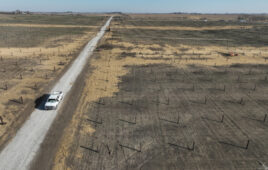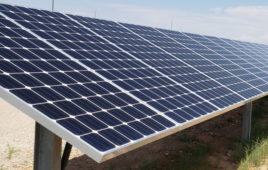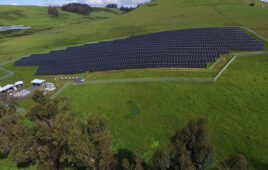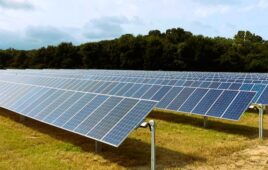Leslie Langnau, Managing Editor
At solar cell manufacturer Würth Solar, current production yield is at 90% and rising. Würth Solar GmbH & Co. KG, Schwäbisch Hall, Germany, has been producing solar modules using general chalcopyrite films of copper indium selenide (CIS) since October 2006. The company manufactures printed circuit boards (PCBs) on glass substrates with dimensions of 1200 mm x 600 mm. Quality assurance requires that these boards be identified with a Data Matrix code. The problem is the low-contrast between the laser etched codes and the module material, requiring a vision system capable of reading the codes under harsh conditions and directing the modules to their production stations.
Since the start of production in Germany, Würth Solar has collaborated with AIT Göhner GmbH, a Stuttgart-based integration partner of Cognex. Together, they implemented data tracking usingIn-Sight ID readers.

The multi-layered CIS modules have a coating thickness of 4 μ. Even in poor light conditions, these modules guarantee a high-energy output.

The Cognex In-Sight 5400 and 5100 series ID readers detect the barely visible laser etched codes and decode them at distances greater than 7 ft.
Quality assurance requires that glass plates be assigned to individual inspection stations by means of Data Matrix code identification. The data are recorded every third or fourth step of the production process to ensure that each plate is processed correctly. During production, quality data are collected from the substrate plates in each machine. Individual quality results, however, arrive only after the modules are performance tested in the solar simulator. Therefore, the likelihood that a module will have the desired output of approximately 80 W is not apparent until the end of the coating process. So quality data are collected beforehand to determine the origin of any defects that arise.
The Data Matrix code is applied by laser engraving, which required a suitable vision system capable of reading the imprint. The difficulty with lasered Data Matrix codes on glass is the low contrast between the engraving and the surrounding surface.
After testing various vision systems, Würth Solar engineers settled on the Cognex In-Sight 5400 and 5100 series ID readers. These ID readers detect barely visible codes and decode them at distances greater than 7 ft. The lasering step is followed by 19 processing steps, including the application of the base coating and subsequent laser structuring that gives the plates their cellular shape. A quality inspection is vital at this juncture, as the key production step immediately follows the washing of the plates. In this step, a CIS coating is applied to the plates at a temperature of 1112° F. After a chemical treatment to apply a buffer coating, the Data Matrix code is re-checked. Zinc oxide is then applied, forming a light-permeable, front contact for the solar cell and thus completing the photodiode. In the subsequent final finishing stage, plates are given additional bores for the guide electronics for the contacts.
At the final step, the coated substrate glass is permanently bonded to the cover glass. Thus combined, the CIS solar panel is ready for a variety of applications ranging from classic sun collectors and electricity generation on roofs and house facades to integrated product and stand-alone products. Würth Solar plans to install additional Cognex ID readers in an effort to increase production output from 600 to 1,100 solar modules a day.
Cognex
www.cognex.com





Tell Us What You Think!